Rome Geography
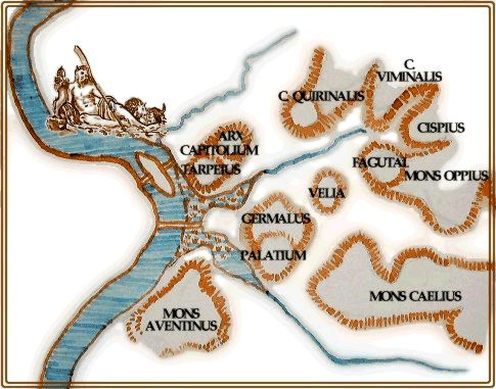
Essential Themes
Geography: Why do people move and live where they do?
Today, Rome is often called the "Eternal City." Two thousand years ago, the world was ruled by Rome. From England to Africa and from Syria to Spain, one in every four people on earth lived and died under Roman law.
At the height of its power, the Roman Empire mixed sophistication with brutality and could suddenly swing from civilization, strength, and power to greed, tyranny, and terror. Before the Empire declined and Europe slid into the Middle Ages, Rome had established a legacy of art, architecture, engineering, laws, language, and government that remains a part of our lives today. Because of that, it will be good to understand a bit about Rome's past. You will start your study of ancient Rome by exploring the geography of the Italian peninsula.
What are 2 ways that the geography of the Italian peninsula differed from that of ancient Greece? How did those difference lead to different patterns of development?
Geography: Why do people move and live where they do?
Today, Rome is often called the "Eternal City." Two thousand years ago, the world was ruled by Rome. From England to Africa and from Syria to Spain, one in every four people on earth lived and died under Roman law.
At the height of its power, the Roman Empire mixed sophistication with brutality and could suddenly swing from civilization, strength, and power to greed, tyranny, and terror. Before the Empire declined and Europe slid into the Middle Ages, Rome had established a legacy of art, architecture, engineering, laws, language, and government that remains a part of our lives today. Because of that, it will be good to understand a bit about Rome's past. You will start your study of ancient Rome by exploring the geography of the Italian peninsula.
What are 2 ways that the geography of the Italian peninsula differed from that of ancient Greece? How did those difference lead to different patterns of development?
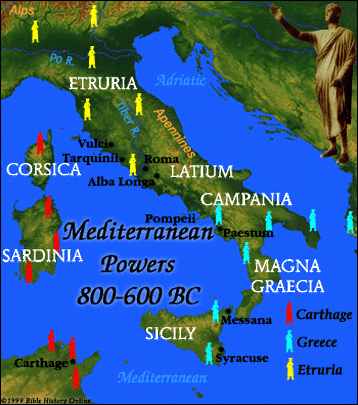
Location. Location. Location.
Geography is the study of how humans interact with their environment. Without a doubt, human activity is shaped, sometimes dictated, by geography. Civilization, however, is often dependent on how people shape their environment. The earliest settlers in Mesopotamia, Egypt, India, and China all settled along great rivers and used resources the rivers provided to build the first civilizations. Along the banks of rivers such as the Tigris & Euphrates, the Nile, the Indus, and the Huang He, farming communities were established and those communities grew into cities. With their absence of great rivers and, therefore, a lack of large scale farming, as well as rugged mountains that divided Greek communities, the ancient Greeks took advantage of their massive coastline and went to sea to connect with other peoples around the Mediterranean, trading with them and building colonies almost everywhere they went. Rome was different from other early civilizations - bigger, more complex, some would say greater (especially if you were a proud Roman, you might say that). To understand Roman greatness, you must first understand the geographic good fortune of early Rome.
Geography is the study of how humans interact with their environment. Without a doubt, human activity is shaped, sometimes dictated, by geography. Civilization, however, is often dependent on how people shape their environment. The earliest settlers in Mesopotamia, Egypt, India, and China all settled along great rivers and used resources the rivers provided to build the first civilizations. Along the banks of rivers such as the Tigris & Euphrates, the Nile, the Indus, and the Huang He, farming communities were established and those communities grew into cities. With their absence of great rivers and, therefore, a lack of large scale farming, as well as rugged mountains that divided Greek communities, the ancient Greeks took advantage of their massive coastline and went to sea to connect with other peoples around the Mediterranean, trading with them and building colonies almost everywhere they went. Rome was different from other early civilizations - bigger, more complex, some would say greater (especially if you were a proud Roman, you might say that). To understand Roman greatness, you must first understand the geographic good fortune of early Rome.
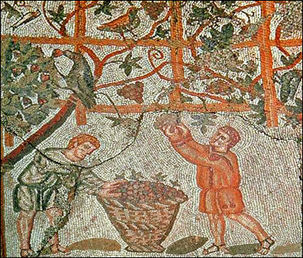 Italy has vast agricultural areas.
Italy has vast agricultural areas.
From 4000 BCE to 2000 BCE, everybody invaded Italy. Why not? Italy had numerous geographic advantages. It was the middle peninsula in the heart of the Mediterranean Sea. Because of that, it was the bridge between east and west, as well as north and south. That location made it accessible by water for other early civilizations. Italy's numerous mountains helped protect local communities but they were not so high or so numerous that they divided one from another the way that mountains did in ancient Greece. More, Italy has numerous inland rivers. Flowing through land that is suitable for farming, those rivers provided important resources for the peninsula's first peoples. Italy’s vast coastline, however, made invasion a fact of life for early settlers. Of course, one of the consequences of interacting with others, whether through trade or conflict, is exposure to new ideas and ways of doing things. Often, that exposure enriches an area.
Carthaginians from North Africa built colonies in Southern Italy and on nearby islands. Carthage later became one of Rome’s bitterest enemies. Before Rome was founded, the Greeks had also explored southern Italy and set up colonies of their own. Among other things, the Greeks brought with them stories of their gods and goddesses. As communities traded with one another, those stories got around.
Carthaginians from North Africa built colonies in Southern Italy and on nearby islands. Carthage later became one of Rome’s bitterest enemies. Before Rome was founded, the Greeks had also explored southern Italy and set up colonies of their own. Among other things, the Greeks brought with them stories of their gods and goddesses. As communities traded with one another, those stories got around.
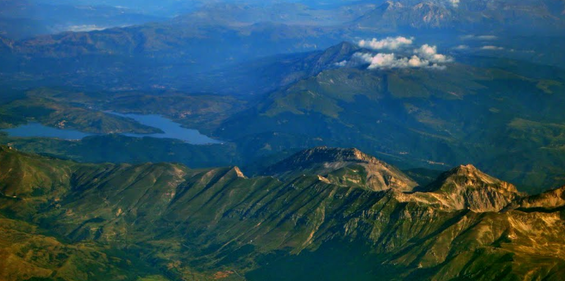 The Apennines form Italy's "backbone."
The Apennines form Italy's "backbone."
Scoping Out the Landscape
Italy is a rocky, mountainous peninsula 600 miles long and 150 miles wide. The peninsula stretches south from Europe into the Mediterranean Sea. A peninsula is a piece of land surrounded on three sides by water. The Italian Peninsula is shaped like a boot. Its heel points toward Greece, while its toe points across the sea to Africa.
The Apennine Mountains form the peninsula’s “backbone.” They stretch from north to south, with the Tiber River cutting through them in central Italy. Along the northern border, the Alps serve as a natural barrier. Unlike the mountains in Greece, which divided communities, passes through the Italian mountains helped link people from different parts of early Italy. As a result, those peoples could trade ideas and goods with one another.
Italy is a rocky, mountainous peninsula 600 miles long and 150 miles wide. The peninsula stretches south from Europe into the Mediterranean Sea. A peninsula is a piece of land surrounded on three sides by water. The Italian Peninsula is shaped like a boot. Its heel points toward Greece, while its toe points across the sea to Africa.
The Apennine Mountains form the peninsula’s “backbone.” They stretch from north to south, with the Tiber River cutting through them in central Italy. Along the northern border, the Alps serve as a natural barrier. Unlike the mountains in Greece, which divided communities, passes through the Italian mountains helped link people from different parts of early Italy. As a result, those peoples could trade ideas and goods with one another.
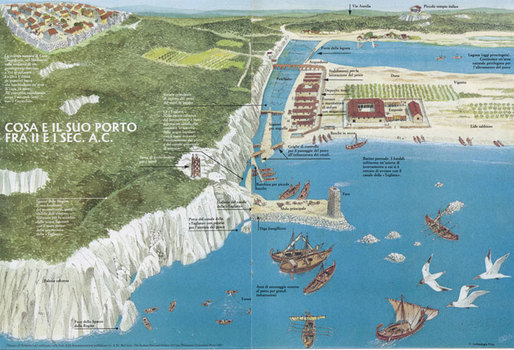 Early Roman towns were rarely far from the sea.
Early Roman towns were rarely far from the sea.
Several bodies of water surround Italy. They are the Tyrranhean Sea, the Adriatic Sea, the Mediterranean Sea, and the Ionian Sea. Using their easy access to the sea, early Romans were able to take advantage of many ancient, established trade routes to other regions of the Mediterranean. Greece is only 50 miles across the Adriatic, and Africa is only 100 miles from the west coast of the island of Sicily. Later, their position made it easier for Rome to eventually conquer and gain new territories.
Along which river was the city of Rome built?
Along which river was the city of Rome built?
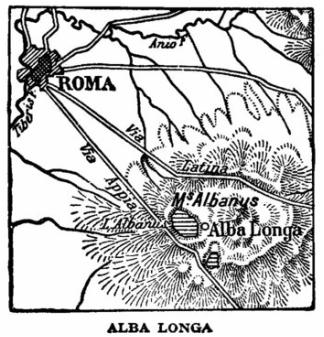
Along the western coast of Italy, at the base of the Apennine mountain range, lie three areas classified as plains. Plains are flatlands. Often, they are ideal places to farm (think about the USA's 'Great Plains'). It is on those plains that early settlers established their first settlements. The Tuscan Plains were home to the Po River. The Latium Plains along the central coast became the home of Alba Longa and Rome, bustling cities near the Tiber River and the seacoast. They were home to the Roman Empire’s trade business. The Campanian Plains to the south boasted Italy’s best harbor. Another feature that distinguished early development on the Italian peninsula from development in ancient Greece was that each of these plains provided the early settlers land that was suitable for farming.
The Italian peninsula was perfect for consolidating power within Italy and expanding power from Italy to other parts of the Mediterranean region. It was in the Latium Plains that an Indo-European tribe called the Latins first settled. The Latins are the early ancestors of the Romans. Their first city, Alba Longa, was established around 1000 BCE. The Latin’s most important city, Rome, was founded in 753 BCE.
The Italian peninsula was perfect for consolidating power within Italy and expanding power from Italy to other parts of the Mediterranean region. It was in the Latium Plains that an Indo-European tribe called the Latins first settled. The Latins are the early ancestors of the Romans. Their first city, Alba Longa, was established around 1000 BCE. The Latin’s most important city, Rome, was founded in 753 BCE.
What are at least three reasons the Latins chose to settle and build Rome near the Tiber River?
A Roadmap for Success
What did Rome’s early settlers look for when deciding where to build their cities and how did the geography of Rome meet their needs? That’s easy. The area around Rome provided early settlers with:
Fresh Water - Fresh water is essential for all life - people, animals, and crops. The Tiber River provided a means of transportation that connected communities through trade. It also provided easy access to the Mediterranean and other peoples who called the region home.
A Roadmap for Success
What did Rome’s early settlers look for when deciding where to build their cities and how did the geography of Rome meet their needs? That’s easy. The area around Rome provided early settlers with:
Fresh Water - Fresh water is essential for all life - people, animals, and crops. The Tiber River provided a means of transportation that connected communities through trade. It also provided easy access to the Mediterranean and other peoples who called the region home.
|
Sea Access - The importance of access to the sea cannot be overstated. Secure ports are necessary to safely harbor ships used for trade and military expansion into other lands.
Good Land - For a city to flourish, it must be able to support the dietary needs of a growing population. That requires easy access to land that is good for farming, grazing, and hunting. All of the plains of the Italian peninsula are suitable for farming. |
|
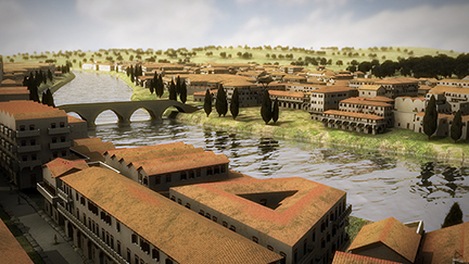
Protection - In order to prosper, the site chosen for a city must offer some protection from invaders by land or by sea. Because it is natural that people will move to cities for jobs and for the protection provided by a larger population, a good site for a city must also be one that has room for the city to grow.
Rome is 15 miles inland from the coast, and the Latins who settled Rome built their city on the crest of seven steep hills. Its inland location gave Rome easy access to the sea but, at the same time, it protected the people of Rome from naval attacks. The hills around Rome were covered with forests of oak and chestnut. Small streams ran through valleys. Flanking the hills was the large Tiber River, whose steep banks provided another level of natural protection. The Mediterranean climate of hot, dry summers and wet, mild winters provided an ideal environment for people, plants, and animals to thrive. The rich volcanic soil in the area proved to be perfect for raising crops. During the day, settlers farmed the fertile plain at the base of the hills. At night, they returned to their hilltop homes, from which they could defend themselves against an enemy attack.
Because of the abundance of natural gifts the area provided, Rome’s early settlers enjoyed the advantages of a rich life and Rome grew from a small tribal village to a vast empire. In your next lesson, you will learn more about the first people who settled and ruled Rome.
Rome is 15 miles inland from the coast, and the Latins who settled Rome built their city on the crest of seven steep hills. Its inland location gave Rome easy access to the sea but, at the same time, it protected the people of Rome from naval attacks. The hills around Rome were covered with forests of oak and chestnut. Small streams ran through valleys. Flanking the hills was the large Tiber River, whose steep banks provided another level of natural protection. The Mediterranean climate of hot, dry summers and wet, mild winters provided an ideal environment for people, plants, and animals to thrive. The rich volcanic soil in the area proved to be perfect for raising crops. During the day, settlers farmed the fertile plain at the base of the hills. At night, they returned to their hilltop homes, from which they could defend themselves against an enemy attack.
Because of the abundance of natural gifts the area provided, Rome’s early settlers enjoyed the advantages of a rich life and Rome grew from a small tribal village to a vast empire. In your next lesson, you will learn more about the first people who settled and ruled Rome.
